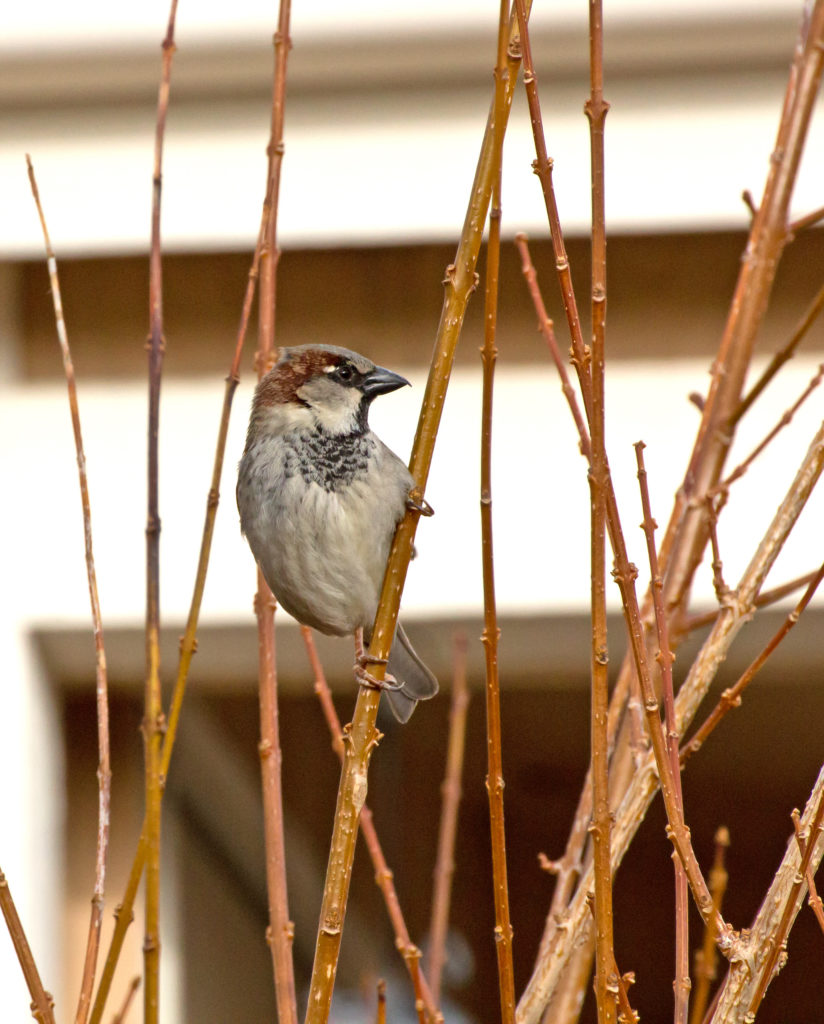By John Humphreys
I have been thinking a lot about sparrows recently. On a recent trip to Italy, I learned that the familiar House Sparrow of Northern Europe – which we have as an invasive species here in North America – is replaced in Italy by the (wait for it) Italian Sparrow, which is a spruced up, rather snazzy version of the one most of us know. It appears that this species arose through hybridization of the House Sparrow and the Spanish Sparrow, leading to a fertile and stable species.
Interestingly, when you look at the bird’s geographic range, it is only found in Italy; its genetic father, the Spanish Sparrow, is found in Spain, North Africa, and into Central Asia. It is now spreading into Eastern Europe.
Okay, I’m a bird geek. But one of the reasons I find this interesting is that the Italian Sparrow is sort of “boxed in” between its two parents. The House Sparrow has been extraordinarily successful in invading many countries across the world – North America, most of South America, much of Africa as well as Australia. The Spanish Sparrow seems to be following in its footsteps.
So what? Well, even the commonest of birds has its problems. In Great Britain, where I was born, the House Sparrow was once the most abundant of birds. So much so that when formal scientific bird feeder surveys were started, the idea of counting how many sparrows were seen was dismissed. Why bother? They are just too common to bother about. It turns out that that was a big mistake. Presumably thanks to an increasingly pervasive use of insecticides, and alterations in farming practices, the House Sparrow population has plummeted over the last few decades. We say ‘presumably’ because we don’t have much of a handle on how common it really was in the beginning. Now ornithologists are better prepared, making sure that even common species are studied, lest once again, a common bird goes extinct before our very eyes.
Sparrows matter to God. In Matthew 10:29, Jesus says “Are not two sparrows sold for a cent [assarion]? Yet not one of them will fall to the ground apart from your Father”. People have argued for years as to whether this means that God wills the sparrow’s fall, or observes it and cares about it. There is a detailed analysis (here) of this verse by H.F. Stander, from the Department of Ancient Languages, University of Pretoria. In it, Stander states, “… the Greek Church Fathers never interpreted this verse as God who willed the death of the sparrow. As a matter of fact they explicitly distanced themselves from such an explanation. But they always interpreted it that … God knows beforehand what is going to happen, and He is omnipresent and cares.” Explicitly, Stander points to Athanasius, who says that the verse is not there to “… emphasize God’s will or God’s knowledge regarding the sparrows, but rather his care for and involvement in the creation. [Athanasius] therefore also quotes other verses such as Matthew 6:26 (‘Look at the birds of the air; they do not sow or reap or store away in barns, and yet your heavenly Father feeds them’).”
Maybe it’s a bit of a stretch that bird surveys – of roller populations by A Rocha France, for instance – are mimicking the care that our Lord evinces for every individual living creature on the planet. But I hope you’ll agree that the principles behind A Rocha reflect this Bible verse. Please treasure the familiar and commonplace; He does.
John Humphreys is a scientist and conservationist who also loves wildlife gardening. He has a website, www.wildlifegardening.org.








Add a Comment